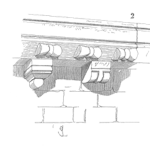
Accelerated Life Testing (ALT) on subcomponents and durability testing for whole products are two strategies used to assess the reliability of products. ALT involves subjecting a product to conditions beyond its normal service parameters to uncover faults and potential failure modes in a short time, allowing engineers to make predictions about its service life and maintenance intervals. On the other hand, durability testing for whole products involves testing the entire product under normal operating conditions to assess its long-term reliability and performance.
ALT:
- Purpose: ALT is used to estimate the real-use reliability of a product by collecting quantitative data on how failures are likely to occur in the future.
- Method: ALT can be performed using a constant stress profile or a step stress profile, where the stress on the component is increased to induce failure more rapidly.
- Advantages:Provides quantitative data on failure modes and likely future failures.Allows for the estimation of real-use reliability without waiting for failures to occur at their normal rate.Helps in determining the effectiveness of derating.
- Disadvantages:Requires careful consideration of failure modes at different stress levels.Must be performed correctly to accurately predict the product’s reliability.
Durability Testing :
- Purpose: Durability testing is used to assess the long-term reliability and performance of the entire product under normal operating conditions.
- Method: The product is subjected to normal operating conditions to evaluate its reliability and performance over an extended period.
- Advantages:Provides a comprehensive assessment of the product’s reliability and performance under real-world conditions.
- Disadvantages:May take a longer time to obtain results.Not feasible for products with long service lives.
By the end of the day, Accelerated Life Testing (ALT) is often considered a better alternative to durability testing for several reasons:
Early Identification of Weaknesses: ALT helps find weaknesses early in the product’s development lifecycle, reducing financial risk by allowing engineers to determine if the theoretical idea for a device will work in the physical world.
Cost-Effectiveness and Customization: ALT is cost-effective and allows for testing customization, making it a practical method for assessing the reliability of subcomponents.
Speed and Efficiency: ALT accelerates the testing process, significantly shortening the time required to complete the tests, making it more efficient than traditional reliability testing.
Derating Effectiveness: ALT is a useful way to determine the effectiveness of derating, which is the process of reducing the load on a component to extend its life.
In summary, ALT’s ability to find weaknesses early, its cost-effectiveness, efficiency, and effectiveness in determining derating make it a preferred alternative for assessing the reliability and durability of products.
Leave a Reply